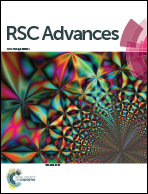Study of the electrochemical recovery of cobalt from spent cemented carbide
Abstract
The massive accumulation of spent cemented carbide not only produces environmental pollution but also wastes resources such as tungsten and cobalt. To solve the problem, a low-temperature acid aqueous electrochemical method was used; cobalt was recycled on a stainless steel cathode, and at the same time, tungstic acid was enriched at a spent cemented carbide anode, achieving a high efficiency, low energy consumption, and low pollution separation and recovering spent cemented carbide. The transient electrochemical test results show the following: the reduction mechanism of cobalt is Co2+(aq) + 2e− → Co(s). The nucleation mechanism is close to instantaneous nucleation. The electrodeposition is irreversible and controlled by the diffusion step. The average diffusion coefficient of Co(II) is 2.16589 × 10−7 cm2 s−1. Electrodeposition experiments show that cobalt enters the electrolyte in the form of Co(II) and is reduced to elemental cobalt on the stainless steel electrode, and tungsten carbide (WC) is oxidized to tungstic acid (H2WO4) under the oxidizing atmosphere of the anode and enriched in the anode area. The investigation provides favorable electrochemical conditions for the recovery and separation of other valuable metals from spent alloys.



 Please wait while we load your content...
Please wait while we load your content...